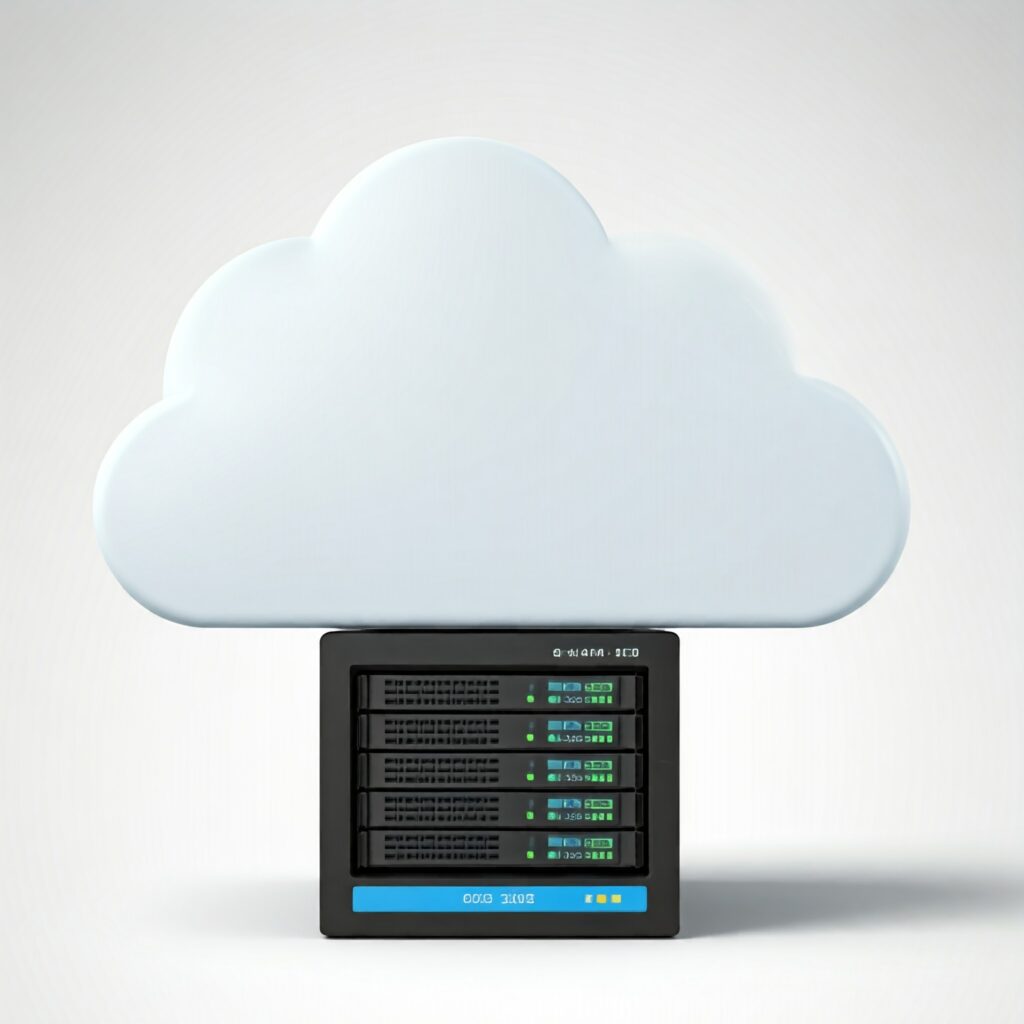To thrive in today’s rapidly evolving business environment, embracing technology is imperative. For small businesses, leveraging cloud servers offers a practical, flexible, and reliable solution for managing data and applications. By migrating to a cloud-based server, you can minimize hardware expenses, improve teamwork, and ensure seamless business operations from any location. This blog will provide a comprehensive step-by-step guide on how to establish a cloud server for your small business, along with a frequently asked questions section to address common concerns and queries.
Why Set Up a Cloud Server for Your Small Business?
Before diving into the setup process, let’s first explore the benefits of using a cloud server for your small business:
- Cost Savings: Cloud servers eliminate the need for expensive physical hardware, reducing maintenance costs.
- Scalability: Easily adjust server resources based on your business’s needs without purchasing new hardware.
- Remote Access: Access data, applications, and files from anywhere with an internet connection, making remote work seamless.
- Improved Collaboration: Teams can collaborate in real time by working on the same documents and systems.
- Data Security: Leading cloud providers offer robust security measures, including encryption and automated backups, to keep your business data safe.

Step-by-Step Guide to Setting Up a Cloud Server for Your Small Business
Step 1: Choose the Right Cloud Service Provider
To begin, choose a reliable cloud service provider that caters to small businesses. Some popular options include:
Step 2: Assess Your Business Requirements
Each platform offers unique features, pricing models, and technical support. Take time to compare these providers to find the one that best fits your business needs.
Before setting up your cloud server, it’s essential to determine what your business needs in terms of:
- Storage: Estimate how much storage space you’ll require for your data.
- Performance: Consider whether you need high-speed processing for tasks like running applications or if you only need basic file storage.
- Scalability: Think about how your storage and computing needs may grow over time.
- Security: Evaluate your need for data encryption, backups, and other security measures.
Understanding these factors will help you select the best server plan and configuration.
Step 3: Set Up an Account with Your Provider
Once you’ve chosen a provider, create an account. Most cloud service providers offer a free trial or basic free tier, allowing you to test their services before committing to a paid plan.
Step 4: Choose the Right Cloud Server Plan
Your provider will offer several server plan options based on your requirements. Common factors to consider when choosing a plan include:
- Storage Capacity: Select how much storage you’ll need, considering future growth.
- Processing Power: Choose the level of CPU and RAM based on the type of work you’ll do (simple storage vs. running applications).
- Backup and Recovery: Some plans offer automatic backup services, ensuring your data is secure in case of a failure.
Step 5: Configure Your Cloud Server
Once you’ve selected your plan, it’s time to configure the server. Depending on your provider, this could include:
- Operating System (OS) Selection: Choose the OS that best fits your business (e.g., Linux, Windows).
- Control Panel: Install a control panel like cPanel or Plesk to easily manage your server and monitor its performance.
- Security Measures: Set up security features, such as firewalls, encryption, and two-factor authentication, to protect your data.
Providers like AWS and Azure offer setup wizards to guide you through the process, making configuration straightforward even for non-technical users.
Step 6: Upload Business Data and Applications
Next, you’ll upload your business data and applications to the cloud server. This could include:
- File Storage: Upload all your business documents and databases.
- Applications: Run business-critical software, such as customer relationship management (CRM) systems, directly from the cloud.
- Backups: Ensure you upload backups of your important data to safeguard against loss.
Most providers offer tools like File Transfer Protocol (FTP) or direct uploads through their dashboards to simplify this process.
Step 7: Test and Launch Your Cloud Server
Before fully transitioning to your cloud server, test the following:
- Performance: Make sure applications and processes are running efficiently.
- Security: Double-check that your firewall, encryption, and other security settings are active.
- Accessibility: Ensure that your team can easily access the server remotely.
Once everything is set up and running smoothly, your cloud server is ready for full deployment.
FAQs: Everything You Need to Know About Cloud Servers for Small Businesses
How much does it cost to set up a cloud server for a small business?
The cost of setting up a cloud server depends on your provider and your specific business needs. Entry-level plans typically start at $10 to $50 per month, while larger businesses with more advanced needs may pay over $100 monthly.
Are cloud servers secure for small businesses?
Yes, cloud servers are very secure. Leading providers offer comprehensive security measures such as encryption, firewalls, and regular backups. However, businesses should implement additional security practices like strong passwords and two-factor authentication for added protection.
Can I scale my cloud server as my business grows?
One of the biggest advantages of cloud servers is scalability. You can increase your storage, CPU, and RAM as your business grows, ensuring you always have the right amount of computing power without needing to purchase new hardware.
How does a cloud server differ from a traditional server?
Cloud servers are virtual and hosted online by a service provider, while traditional servers are physical machines located on-site. Cloud servers offer better scalability, cost-efficiency, and flexibility, making them ideal for small businesses that need to grow or adapt quickly.
How long does it take to set up a cloud server?
Setting up a cloud server can be done within minutes or a few hours, depending on the complexity of your setup and the provider you choose. Many cloud services offer streamlined setup processes for small businesses.
Can I migrate my data from a physical server to a cloud server?
Yes, most cloud service providers offer migration tools or assistance to help businesses transfer data from physical servers to the cloud seamlessly.
Do I need IT expertise to set up a cloud server?
While having IT expertise can help, most cloud providers offer user-friendly interfaces and support, allowing even non-technical users to set up and manage a cloud server with ease.
Conclusion
Setting up a cloud server for your small business is an essential move toward improving operational efficiency, enhancing data security, and reducing costs. By following the steps outlined in this guide and choosing the right cloud service provider, your business can benefit from the flexibility, scalability, and convenience that cloud technology offers. Whether you’re just starting out or looking to scale, cloud servers are an ideal solution for modern small businesses.
Ready to take your business to the next level? Start your cloud server setup today!
Follow for more www.techbulletin.in



1 Comment
nice dear, work good